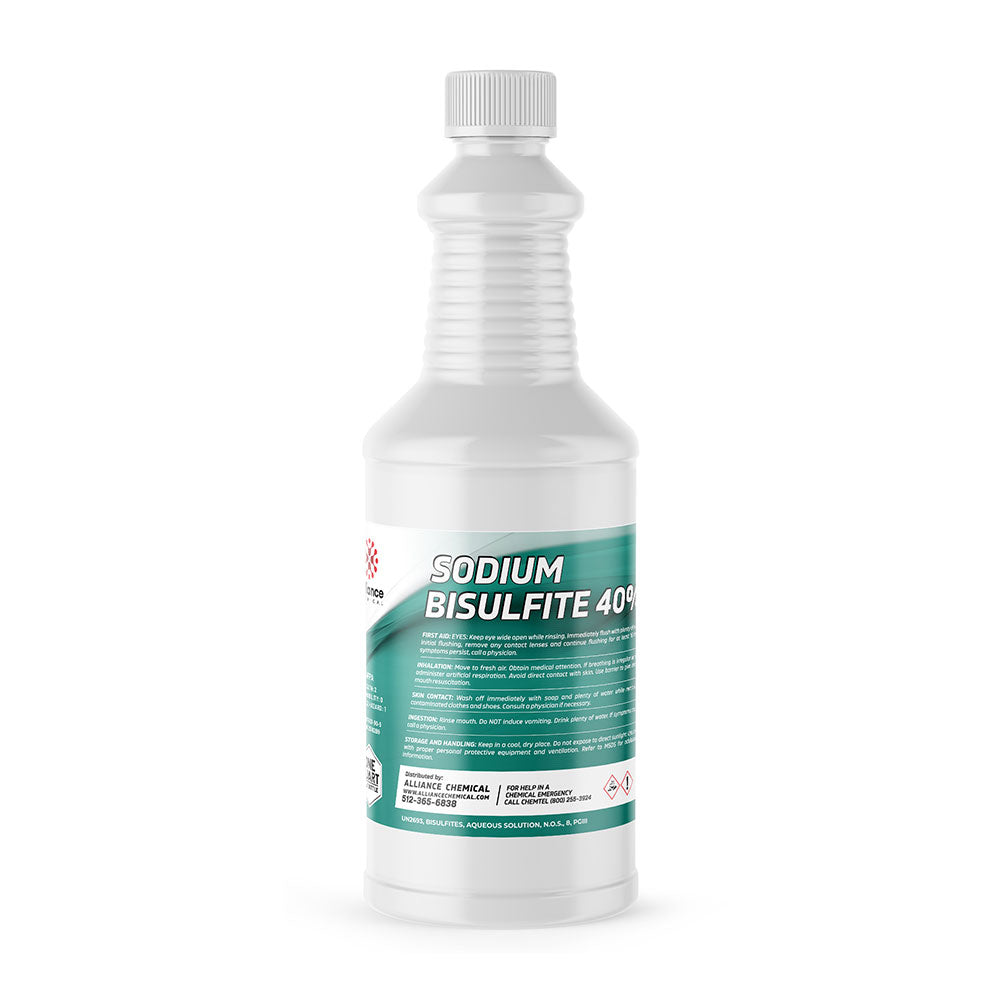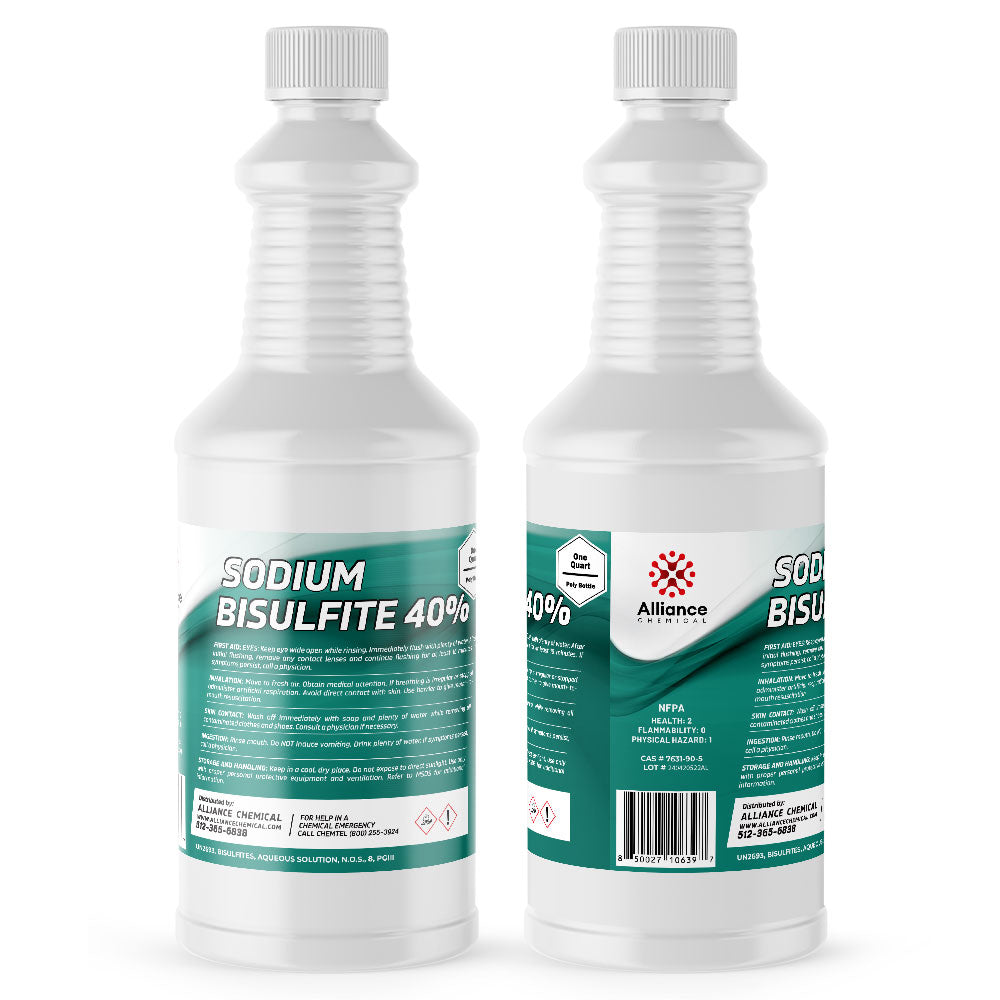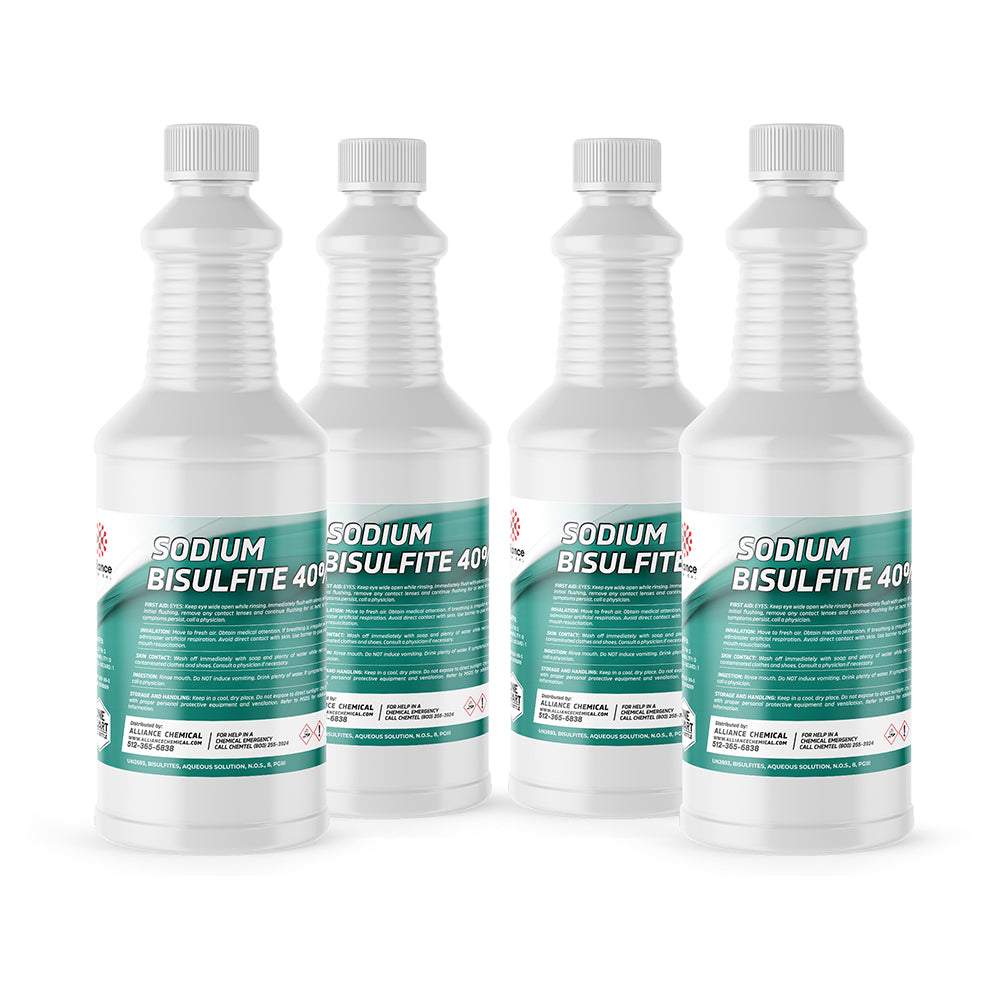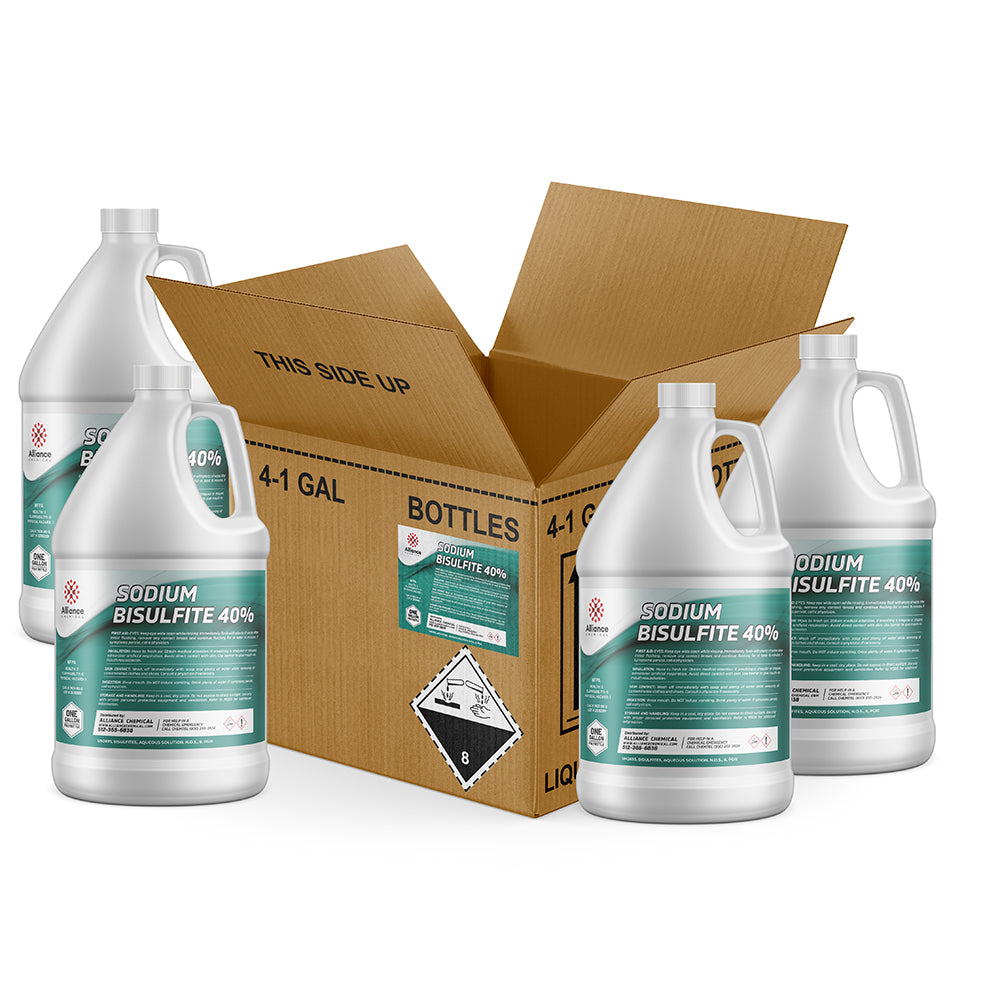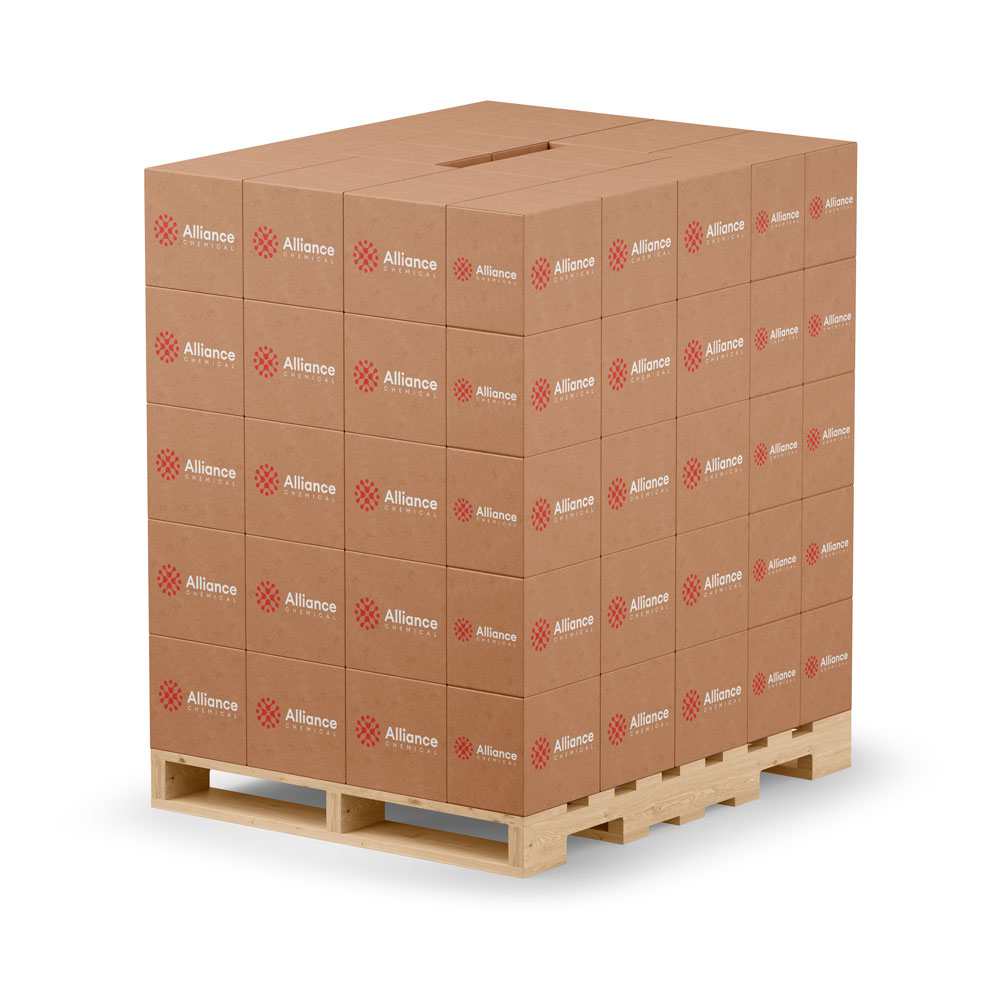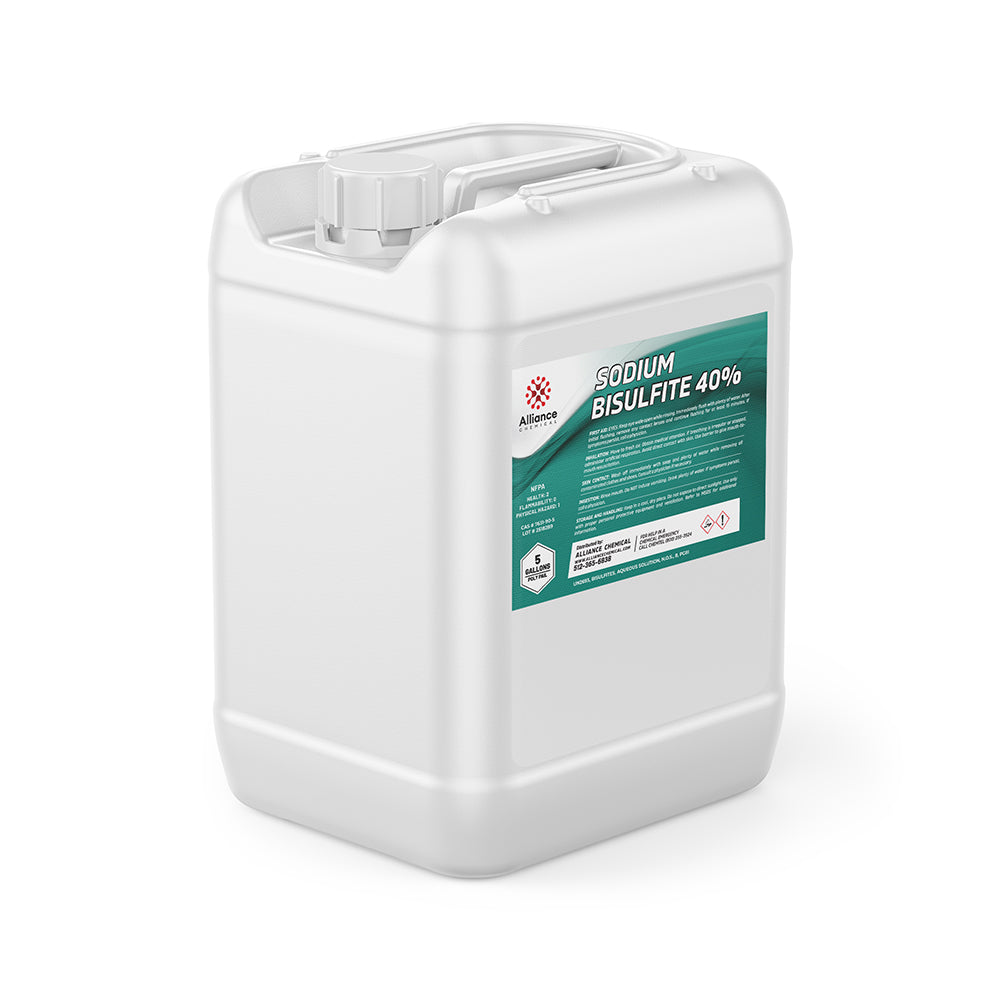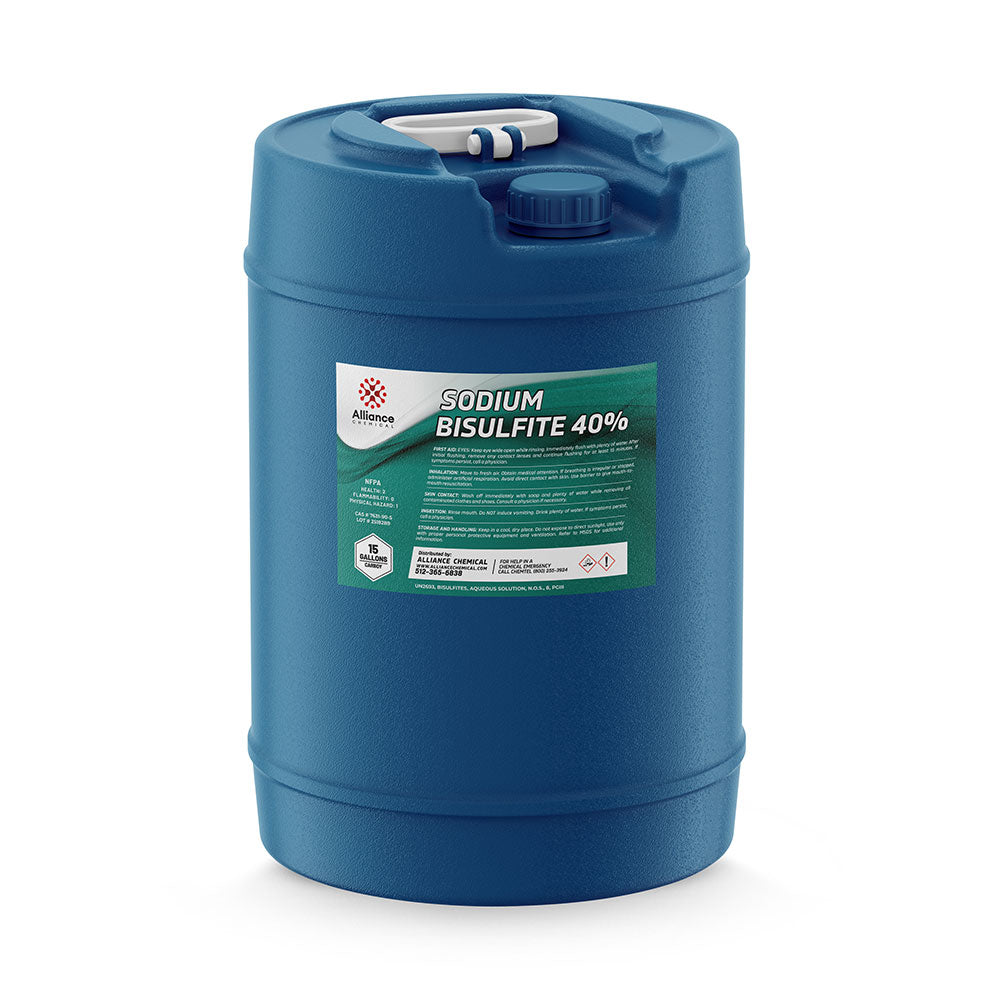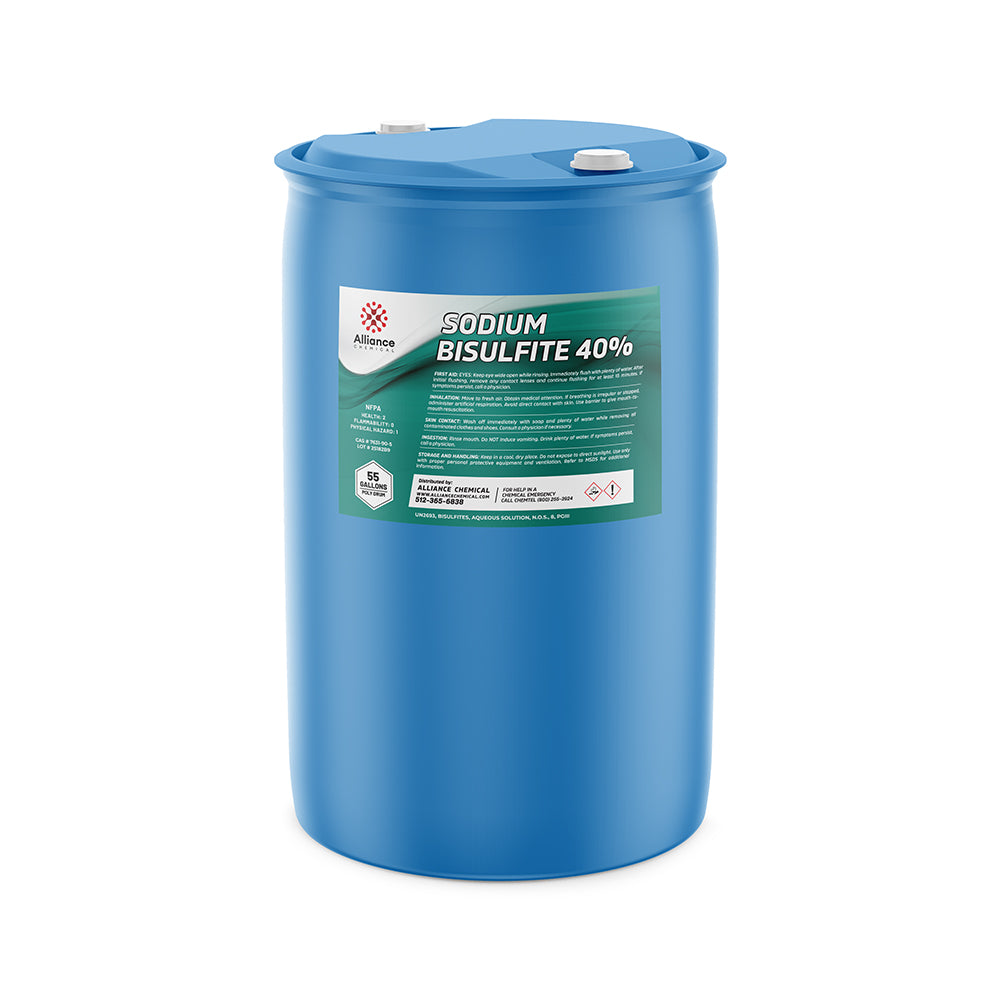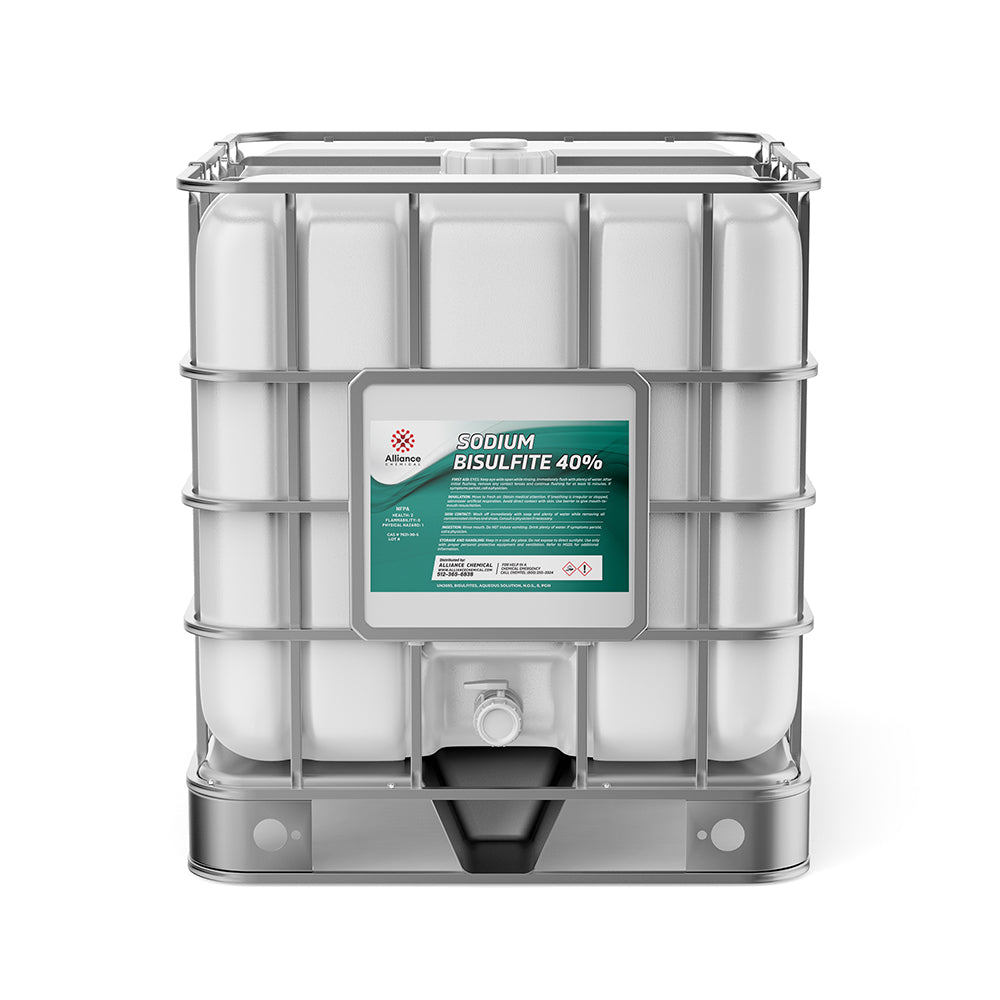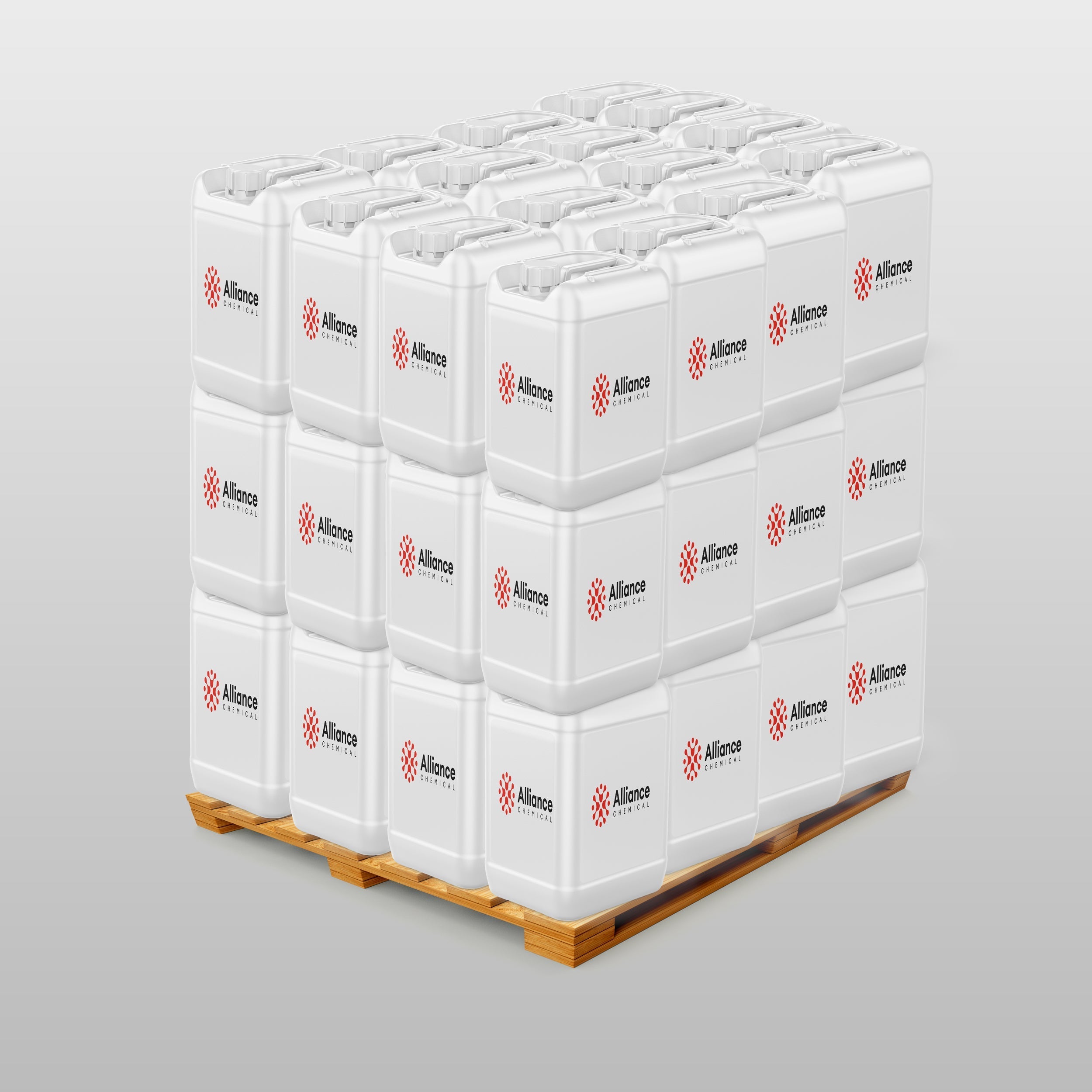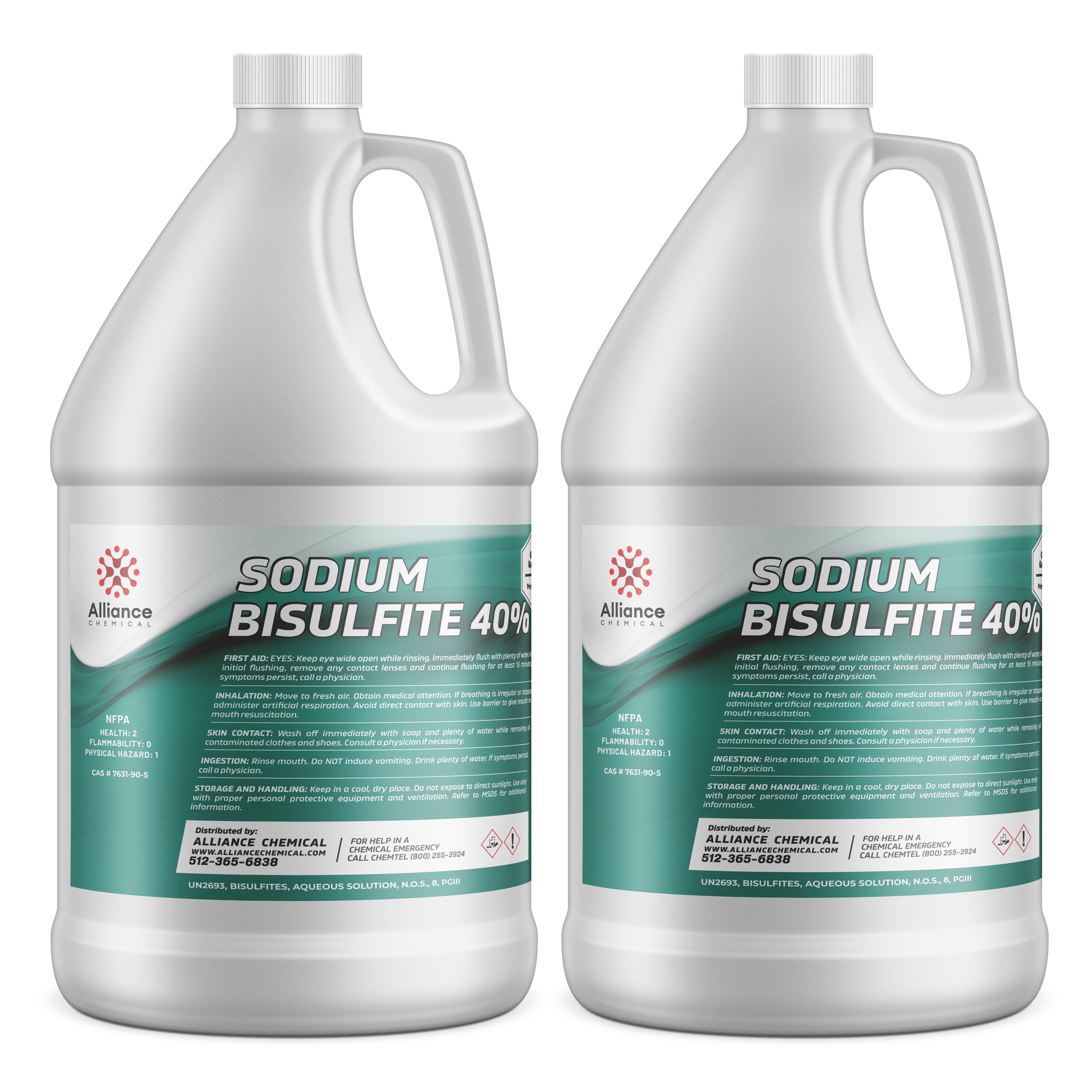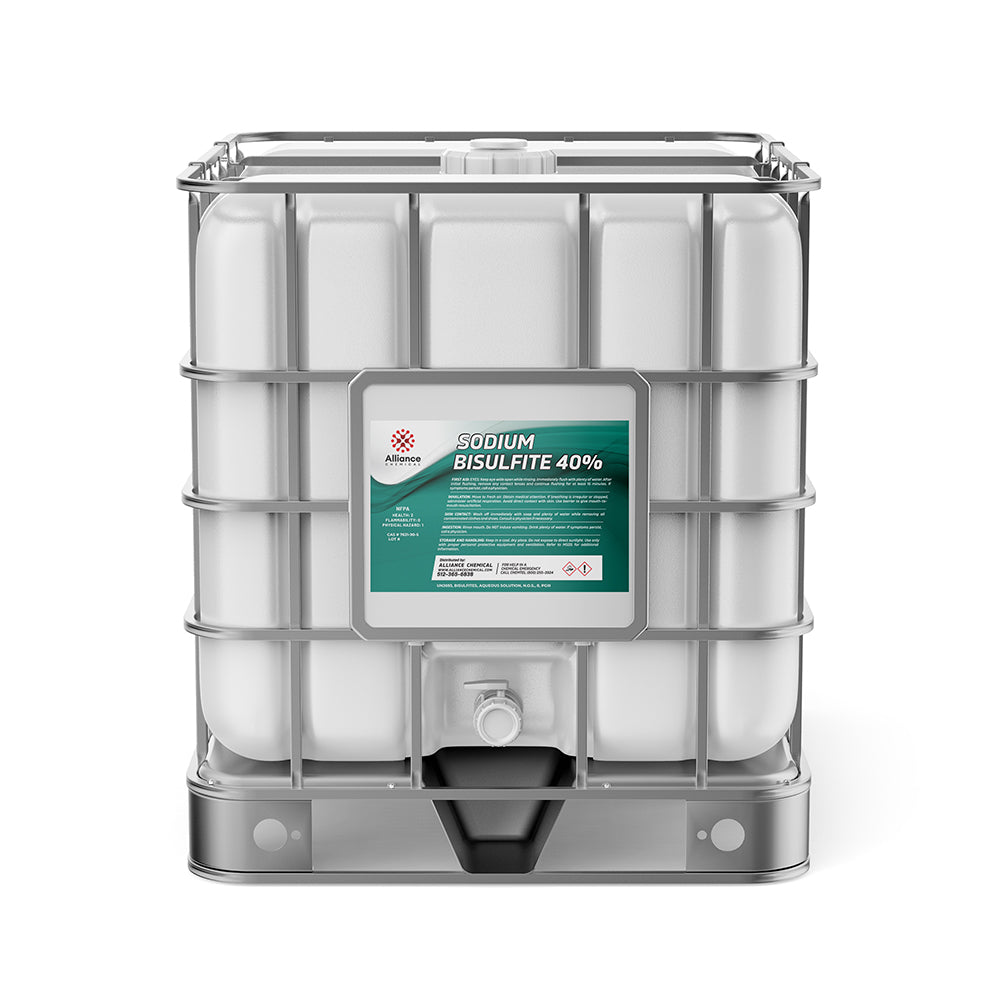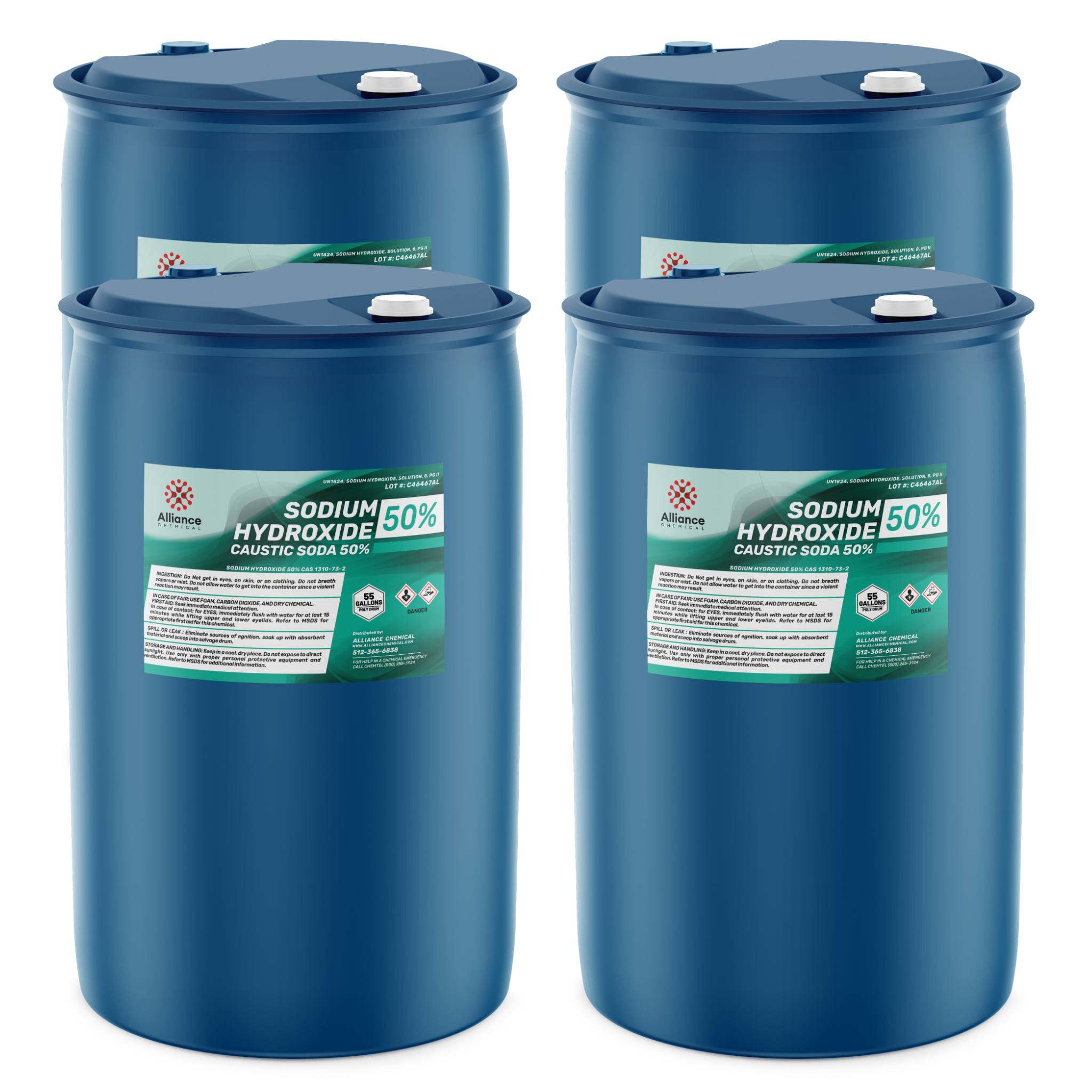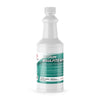Ask a question
Product Overview
Sodium Bisulfite 40% (Sodium Hydrogen Sulfite, NaHSO₃) Technical Grade is a colorless liquid with a slight sulfurous odor that functions as a reducing agent and antioxidant across multiple industrial processes. At 40% w/w in aqueous solution, it provides controlled reducing capacity for chlorine and other oxidants in water treatment while maintaining compatibility with HDPE and glass containment. The product is formulated to deliver predictable reactivity and is commonly used to adjust pH, stabilize colors, and preserve freshness in food processing, as well as to support chemical manufacturing operations requiring a reliable sulfite source. Our specification emphasizes low heavy metal content and strict assay control to ensure performance and compliance with industry standards such as those applicable to technical grade materials used in process streams and intermediate synthesis.
In addition to water treatment and preservation applications, Sodium Bisulfite 40% is employed in photographic processing as a reducing agent and in various chemical manufacturing workflows where a controlled sulfite donor supports dye production, polymer processing, and pharmaceutical-related intermediates. The material is maintained under inert atmosphere to minimize oxidation, preserving its reducing efficiency and ensuring repeatable results across lot-to-lot testing. Overall, this product provides a balance of purity, stability, and available reductive strength suitable for demanding industrial environments.
Key Properties
- CAS: 7631-90-5
- Appearance: Colorless to pale yellow liquid
- Odor: Slight sulfurous odor
- Chemical Formula: NaHSO₃
- Molecular Weight: 104.06 g/mol
- Specific Gravity (20°C): 1.225 (typical)
- Density (25°C): 1.25 g/mL
- Solubility: Soluble in water
- Boiling Point: N/A
- Assay (NaHSO₃, wt%): min 39, max 41, typical 40 (Titration with standardized NaOH)
- Color (APHA/Hazen): max 15, typical 8 (APHA/Hazen visual comparison)
- Residue after ignition: max 0.15 wt%, typical 0.05
- Chloride (Cl⁻, ppm): max 10, typical 5
- Nitrate/Nitrite (NO₃⁻, ppm): max 20, typical 5
- Ammonium (NH₄⁺, ppm): max 2, typical 0.5
- Sulfate (SO₄²⁻, ppm): max 50, typical 20
- Phosphate (PO₄³⁻, ppm): max 5, typical 1
- Arsenic (As, ppm): max 0.01, typical 0.004
- Heavy Metals (as Pb, ppm): max 0.5, typical 0.1
- Iron (Fe, ppm): max 0.5, typical 0.08
- Copper (Cu, ppm): max 0.2, typical 0.05
- Manganese (Mn, ppm): max 0.2, typical 0.04
- Nickel (Ni, ppm): max 0.2, typical 0.04
- Lead (Pb, ppm): max 0.2, typical 0.05
- Zinc (Zn, ppm): max 1, typical 0.25
- Aluminum (Al, ppm): max 0.5, typical 0.1
- Chromium (Cr, ppm): max 0.2, typical 0.05
- Cobalt (Co, ppm): max 0.2, typical 0.04
- Calcium (Ca, ppm): max 1000, typical 400
- Magnesium (Mg, ppm): max 500, typical 150
- Sodium (Na, ppm): max 1000, typical 500
- Potassium (K, ppm): max 100, typical 30
Common Applications
- Water Treatment: Reducing agent to remove residual chlorine and other oxidants in municipal and industrial water streams.
- Food Preservation: Preservative and antioxidant to maintain freshness and limit microbial spoilage in processed foods.
- Photography: Reducing agent in photographic development processes for image formation and restoration.
- Chemical Manufacturing: Intermediate in production of dyes, polymers, and pharmaceutical intermediates requiring sulfite chemistry.
- Textile Industry: Bleaching and dyeing support to reduce color and improve fabric quality.
Safety Precautions
Handle Sodium Bisulfite 40% with appropriate PPE, including chemical-resistant gloves, splash goggles, and a lab coat. Store in a cool, dry place away from direct sunlight in compatible HDPE or glass containers; avoid metal containers to prevent corrosion and contamination. Maintain good ventilation and use containment measures to avoid inhalation or contact with skin and eyes.
In case of exposure, follow SDS guidance: for eyes, rinse cautiously with plenty of water for several minutes; for skin, wash with soap and water and seek medical advice if irritation persists; for inhalation, move to fresh air and seek medical attention if symptoms persist; for ingestion, rinse mouth and do not induce vomiting, obtaining medical attention promptly. Transport as UN 3265, Corrosive liquid, acidic, organic, 8, PG II.
Benefits
✔ Consistent Reducing Power – Provides reliable sulfite-based reduction suitable for water treatment and preservative applications, with tight assay control (39–41 wt%) ensuring predictable performance.
✔ Low Heavy Metal Content – Meets stringent impurity specifications (e.g., As, Pb, Fe, Cu, Zn) to support food and pharmaceutical-grade workflows and minimize contamination risks.
| Property | Value |
|---|---|
| Molecular Weight | 104.06 g/mol |
| Formula | NaHSO3 |
| Assay | 40% |
| Grade | Technical |
| Form | Liquid |
| Solubility | Soluble in water and alcohol |
| Appearance | Clear, colorless to pale yellow liquid |
| Specific Gravity | 1.36 |
| Industry | Industrial, Environmental, Wastewater |
YJ-QQOM-W2O3
$19.05
Unit price
Compare Products
| Price |
|---|
| SKU |
| Rating |
| Discount |
| Vendor |
| Tags |
| Weight |
| Stock |
| Short Description |

